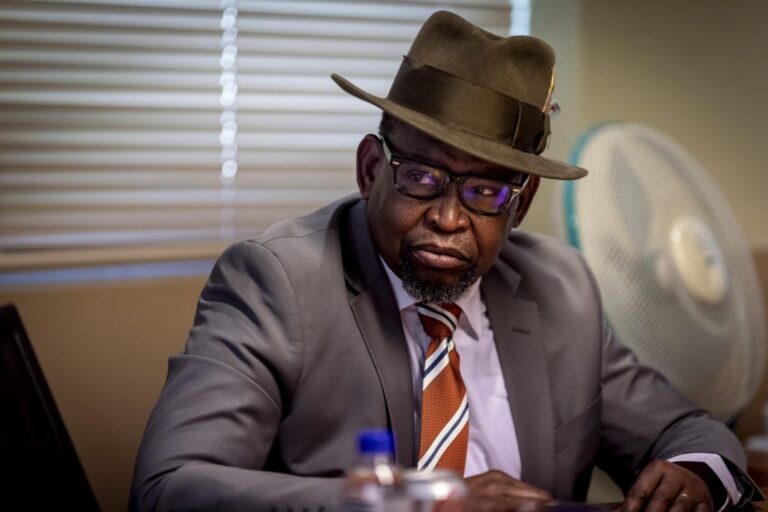Just when we think South Africa’s fiscal woes cannot get worse, they do. Finance Minister Enoch Godongwana has the unenviable task of telling the nation on Wednesday, when he delivers his medium-term budget policy statement (MTBPS), just how much worse off we are.
He has already indicated that the lack of economic growth, fallen revenue collections, and increased debt obligations could culminate in South Africa running out of money by March next year.
ADVERTISEMENT
CONTINUE READING BELOW
Read: Tax shortfall lumps SA with no-good-news budget
Revenue collections are expected to be R60 billion less than budgeted for in February, while debt service costs have increased from the anticipated R340 billion to approximately R366 billion. The current debt burden means that for every rand collected, 18 cents go towards debt repayment.
Intense levels of load shedding
The intensity of load shedding was far more pronounced than initially thought, having a huge impact on growth forecasts for the current year and revenue collections, Godongwana said at the Kgalema Motlanthe Foundation’s Inclusive Growth Forum held over the past weekend.
This was echoed by Edward Kieswetter, commissioner of the South African Revenue Service (Sars), when he addressed the parliamentary finance standing committee earlier in October.
“If the country could recover the revenue lost from load shedding this year, we would have been in a surplus and not lagging behind as we are year-to-date,” he said.
Read: Lower mining revenues, load shedding hit the taxman
Wikus Kruger, director of the Power Futures Lab (PFL) at the University of Cape Town’s School of Economics, believes there is light in the tunnel. In the past 12 months, about 4.7 gigawatts (GW) of solar was installed by consumers, and this is increasing.
“The PFL sees a pipeline of 60-90GW of renewable energy projects being developed, most of which will be selling power directly to private consumers, only ‘wheeling’ the power through the Eskom grid,” he wrote in an article published by Daily Maverick.
Compounding factors
Casey Delport, investment analyst at Anchor Capital, says in a note that the MTBPS typically serves as an update on the primary budget set in February. However, this year, it carries added significance due to the substantial deterioration in the country’s fiscal health.
The investment community “remains hopeful” that Godongwana will provide reassurance that government will address the looming financial challenges and the mismanagement of state-owned enterprises (SOEs) in particular.
“A variety of other factors have compounded SA’s fiscal challenges, such as lower commodity prices, lower revenue collection, Eskom and public sector wage increases, the expected continued roll-over of the Social Relief of Distress [SRD] grant and rising borrowing costs,” says Delport.
Read: Social relief grant faces scrutiny amid spending cuts
Conflicting priorities
Busi Mavuso, CEO of Business Leadership South Africa, says in her regular Moneyweb column the looming elections next year will put pressure on Godongwana to allow the public sector wage bill to grow, extend the SRD grant, bail out SOEs, and fund many government departments to extend services.
“We need to see investment, particularly in the infrastructure required to drive economic growth,” she says, noting that the minister has signalled that some infrastructure spending will be delayed as government seeks to shore up cash to manage the shortfall.
Read:
MTBPS: ‘Opportunity to build confidence on several fronts’
Infrastructure budget cuts would be ‘devastating’ for the country
The SRD grant, which offers R350 per month to about 8.6 million jobless adult South Africans, will likely be extended again beyond the current fiscal year. This grant alone amounts to an expense of more than R36 billion in the current fiscal year. Delport notes that it is not budgeted for beyond this year.
ADVERTISEMENT
CONTINUE READING BELOW
National Treasury has proposed funding options for the SRD grant, which include terminating some government programmes and increasing value-added tax (Vat) by 1% or even 2%, which could generate anything between R25 billion and R50 billion.
“Neither of these is particularly politically palatable for the ANC, given the upcoming elections,” says Delport.
Read: Austere budgets and politics make for uneasy bedfellows
Begging bowls
The usual line up of non-performing SOEs looking for cash bailouts remains.
These include the Post Office (which requires a further R3.8 billion on top of the R2.4 billion allocated in the current fiscal year), the SABC (with a loss of R1.1 billion), and Transnet (a loss of R5.8 billion in the previous year).
Read: Transnet bailout: Govt equity injection crucial for turnaround plan
Delport adds that in addition to these “usual suspects”, the Gauteng Provincial Government still needs to pay R12.9 billion to settle the South African National Roads Agency (Sanral) Gauteng Freeway Improvement Project debt and interest rate obligation, with the government paying R23 billion.
Beyond the upcoming budget reviews, SA’s medium- to long-term fiscal trajectory requires a credible economic growth reform agenda.
Delport warns that without this agenda, fiscal sustainability will not be possible.
“Much rests on the hope of forming a coherent and stable government after the 2024 election.”
Listen to this Moneyweb@Midday podcast as Jeremy Maggs chats with Dr Lumkile Mondi about the possibility of a Vat increase (or read the transcript here):
You can also listen to this podcast on iono.fm here.
Download the free LiSTN audio app on Google Play, Apple or here.

